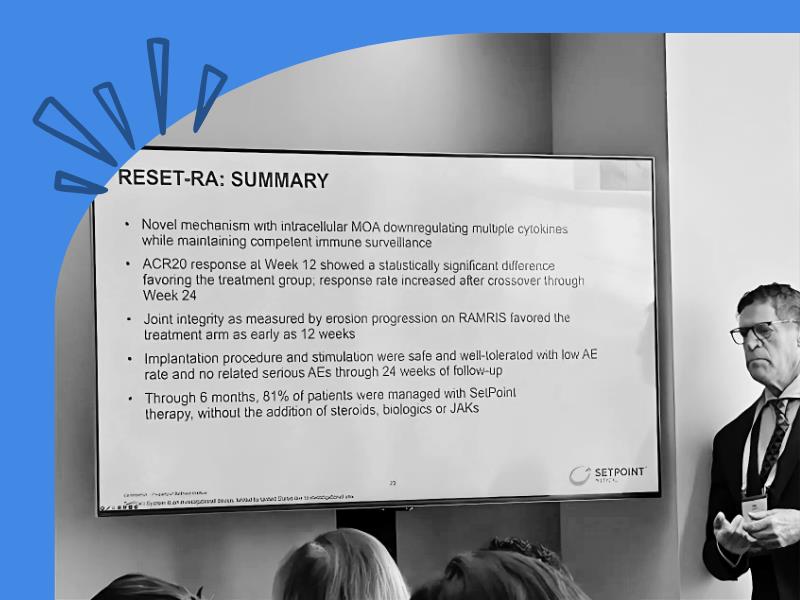Febuxostat (Uloric®)
Febuxostat (Uloric®) is used to manage gout and prevent gout attacks. It’s not used to treat an active gout attack.
Febuxostat (Uloric®), like allopurinol, inhibits your body’s formation of uric acid by blocking the process ofturning hypoxanthine into xanthine, and then blocking the turning of xanthine into uric acid. Febuxostat blocks the same enzyme that allopurinol does, but at a different spot on the enzyme. We don’t know the effectiveness of combining allopurinol and febuxostat, and the combination is not advised.
Studies have shown that 80 mg of febuxostat is more effective at getting patients to their goal of less than 6.0 mg/ dL than 300 mg of allopurinol, but it hasn’t been compared to higher doses of allopurinol. Some people can’t tolerate allopurinol, or it is not effective for them, making febuxostat a good alternative. Allopurinol is excreted from the body mainly by the kidneys and febuxostat mainly by the liver, so some doctors prefer febuxostat in people with decreased kidney function.
A recent study of the cardiovascular (heart-related) safety of allopurinol versus febuxostat, which was done in gout patients with history of cardiovascular disease, had as its primary endpoint a combination of cardiovascular outcomes (stroke, heart failure, need for urgent stenting and cardiovascular death). Overall, these endpoints were the same for allopurinol and febuxostat. The study also looked at cardiovascular death (or deaths due to cardiovascular causes), and this outcome was higher with febuxostat. There is no obvious mechanism for increased cardiac risk with febuxostat, and there are a number of issues that make this study hard to interpret. For the moment, this data requires extra consideration when starting febuxostat in patients with gout who have known cardiovascular disease. Because of the limitations of this study, people on febuxostat who tolerate it may benefit from staying on this medication in most cases, even if they have a history of cardiovascular disease.
Febuxostat is a tablet you swallow once a day, with or without food. The most common dose is 40 mg per day, although some people will take 80 mg per day. After two weeks of taking febuxostat, your doctor will test your uric acid levels to see if you need a higher dosage.
Febuxostat may take many months to be fully effective in stopping gout flares. During that time, you may have an increase in gout attacks, so your doctor may prescribe either colchicine or an NSAID or corticosteroid to help you treat them. You should keep taking your febuxostat even if you have these attacks in those early months on the drug, as the attacks do not mean febuxostat isn’t working.
Febuxostat interacts with two other drugs, and this can raise the level of those drugs in your body. If you take azathioprine (Imuran®), mercaptopurine (Purinethol®), your doctor will need caution in prescribing febuxostat for you. Note that these medications have the same interaction with allopurinol.
Let your doctor know if you have ever had one of the following health conditions: chest pain, cancer, stroke, organ transplant, heart disease, kidney disease, liver disease, or Lesch-Nyhan syndrome, a disorder that causes high uric acid levels in the blood and other symptoms). Also, if you’re female, tell your doctor if you’re pregnant, planning to become pregnant or are breastfeeding before you start febuxostat.
NOTE: Regarding the data discussed above about the cardiovascular safety of febuxostat versus allopurinol, the FDA issued an alert on this matter in November 2017, and in March 2018, data from the study was published in the New England Journal of Medicine. If your doctor prescribes febuxostat, he or she will discuss the risks and benefits of the drug over other options, like allopurinol. Ask questions if you are concerned about possible risks of taking febuxostat, or if you don’t understand what this risk or FDA alert means.
Side Effects of Febuxostat
Febuxostat (Uloric®) may cause side effects like nausea or joint pain (most likely related to a gout flare). It may raise your liver enzymes, so your doctor will monitor this with regular blood tests to be sure your drug is not causing damage to your liver. If you notice side effects like chest pain, rashes, shortness of breath, dizziness, slow or slurred speech, or weakness or numbness in your arm or leg, seek medical attention right away.





